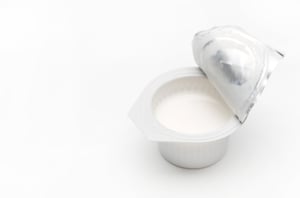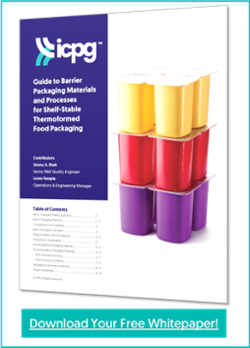 When developing rollstock structures for shelf-stable food packaging applications, barrier packaging properties to consider include moisture vapor permeation, oxygen permeation, material organoleptic properties, UV protection, light permeability, aroma preservation, and the permeability of other gases such as carbon dioxide and nitrogen.
When developing rollstock structures for shelf-stable food packaging applications, barrier packaging properties to consider include moisture vapor permeation, oxygen permeation, material organoleptic properties, UV protection, light permeability, aroma preservation, and the permeability of other gases such as carbon dioxide and nitrogen.
Understanding a products packaging needs is essential to protecting the food product from the various environmental elements that typically cause food to spoil. Some of the most widely used materials found in barrier packaging are metal, paper and paperboard, glass and plastics.
The advantages of plastic barrier packaging include competitive cost, functional efficiency as a result of physical properties, design flexibility and innovation. These elements coupled with readily available supply and ease of use for both the consumer and converter, often make plastic barrier packages the product of choice subsequent to evaluating all of the design variables being considered.
 Common Plastics Barrier Packaging Materials
Common Plastics Barrier Packaging Materials
The most common plastics barrier packaging materials used in the industry include:
Polyvinyl Dichloride (PVdC)
Polyvinyl dichloride (PVdC) is a clear and flexible thermoplastic polymer made through the polymerization of vinylidene chloride to offer excellent optical properties as well as oxygen and moisture barrier properties.
PVdC can serve as a barrier and a sealant as well. It is primarily used in hot-fill and retort processes even though it has a very narrow extrusion process window and yellows overtime.
Acceptance of PVdC has declined over time due to the presence of chlorine content and restrictions with recycling. PVdC has been used as a barrier packaging material for fresh meat packaging for decades. However, without a solid recycling plan, CPG’s have begun to turn away from PVdC with 62% of brands, retailers and packaging producers committing to eliminating or phasing out the material by 2025 per Ellen MacArthur’s Global Commitment initiative. As a result, post-industrial scrap and post-consumer waste either ends up in landfills or is incinerated. Incineration of this material carries its own concerns as it leads to the release of toxic chemicals such as dioxins, a well-known potent human carcinogen.
Ethylene Vinyl Alcohol (EVOH)
Ethylene Vinyl alcohol (EVOH) is a clear, non-chlorine based, flexible and a high gloss thermoplastic semi-crystalline random copolymer. It’s made through the copolymerization of ethylene and vinyl alcohol to offer excellent oxygen barrier properties and resistance to oils, organic solvents and hydrocarbons.
Because EVOH is semi-crystalline, as the ethylene mol % increases, oxygen barrier properties reduce. EVOH is hydroscopic in nature, and if exposed to moisture, the material will lose its gas barrier properties. As a result, this material is generally coextruded and/or laminated as a barrier layer sandwiched with PE, PP, PS or PET to protect the material from moisture and offer additional mechanical properties.
EVOH is also very expensive, so use of this material in a coextruded structure helps to control overall cost while also providing necessary barrier properties.
Polyamide (PA)
Polyamide (PA) is a clear thermoplastic polymer with exceptional mechanical properties (impact strength, toughness, low elongation, high tensile) and good oxygen barrier properties.
Apart from the oxygen barrier, nylon also provides an excellent barrier to chemicals, especially flavors and aroma. Nylon also exhibits good resistance to high heat, allowing for use in retort packaging applications even for products that contain fats and oils.
Compared to other barrier packaging materials (films in particular), nylon offers easy processing and has an operating temperature range that allows for compatibility in both freezer and microwavable applications.
For more information on barrier packaging materials & processes, download our free guide:




